
90 Legal construction and amendment to promote blockchain applications:...
LEGAL CONSTRUCTION AND AMENDMENT TO PROMOTE
BLOCKCHAIN APPLICATIONS: INTERNATIONAL
EXPERIENCES AND RECOMMENDATIONS FOR VIETNAM
Do Quynh Anh
1
, Pham Thi Tham
National Institute for Science and Technology Policy and Strategy Studies
Pham Thi Linh
School of International and Graduate Studies,
Vietnam Institute of Science Technology and Innovation
Summary:
The outstanding characteristics of blockchain technology, along with the prevalence of crypto
assets, cryptocurrencies, and other applications of the technology can positively contribute to
innovation, economic development, and breakthrough growth for Vietnam. Learning from
developed countries when constructing and amending Vietnamese laws to promote blockchain
technology applications is necessary. From a comprehensive study of regulatory approaches and
legal frameworks amendment to promote blockchain applications in such countries as Japan, the
United States, and the European Union, the authors suggest some recommendations for revising
and amending the relevant legal documents in Vietnam.
Keywords: Innovation; Policy; Blockchain; Crypto asset.
Code: 24102601
1. Introduction
Blockchain technology, along with artificial intelligence technology and big
data, brings opportunities and challenges not only to businesses but also to
state management agencies in formulating policies for the development of
national science, technology and innovation (STI). Blockchain technology is
still a new technology, with a race between large companies and technology
powers. If effectively deployed in a solid legal environment, blockchain
technology not only improves the quality of services and information
management but can also bring about profound changes in many socio-
economic activities.
Decision No. 1236/QD-TTg dated October 22, 2024, of the Prime Minister
promulgating the National Strategy on application and development of
blockchain technology to 2025, with a vision to 2030, “improving the legal
1
Author contact: quynhanh2005@gmail.com

JSTPM Vol 13, No 3+4, 2024 91
environment” is ranked as a priority among 5 groups of activities. The
Ministry of Justice, the Ministry of Science and Technology, and relevant
ministries and branches are tasked with “reviewing, researching, and
assessing the impact of the current legal corridor on blockchain solutions and
applications”.
2. Overview of blockchain technology and its applications
2.1. Overview of blockchain technology
Blockchain technology is a decentralized technology or distributed ledger
based on which transaction information is stored anonymously. This
information can be likened to a ledger that is stored simultaneously on all
computers or servers in the network, also known as network nodes, like an
accounting record with thousands of copies throughout the computer
network. This ledger includes continuous and complete chains of information
on all transactions performed and is grouped into data blocks. Each data
block can only be added to the chain if all network nodes with extremely
large computing power reach consensus or have the same result about the
next valid block that will be added to the chain. In principle, any edit/change
of information in a block of data that has been validated and entered the
blockchain will result in incompatibility with copies kept in other nodes of
the blockchain and will not be accepted by the system.
Smart contracts (SC) in blockchain technology: The US National Institute of
Standards and Technology defines SC as “a set of code and data (sometimes
called functions and states) implemented by digitally signed transactions on
a blockchain network”
2
.
2.2. Applications of blockchain technology:
Blockchain technology has been and is being applied in many fields across
various countries, specifically:
- In the banking sector, blockchain technology applications can be classified
into 4 main groups: payment, fraud prevention, customer credit assessment,
and supply chain financing.
- In the financial sector, the concept of decentralized finance (DeFi) appeared
with cryptocurrencies and blockchain technology, which are used to manage
financial transactions. Instead of being processed through a third-party
intermediary, activities in DeFi take place through smart contracts on the
2
Source: https://csrc.nist.gov/glossary/term/smart_contract#:~:text=Definitions%3A,transactions%20on%20the
%20blockchain%20network.

92 Legal construction and amendment to promote blockchain applications:...
blockchain platform. DeFi projects with decentralized applications have
attracted investment capital of up to billions of USD from many banks and
investment funds around the world.
- Cryptocurrency is a combination of cryptography and currency and is the
most popular and influential application of blockchain technology up to now.
Cryptocurrency can be defined as digital currency secured by encryption
techniques based on the exploitation of the power of blockchain technology.
The most popular cryptocurrencies, recognized by many organizations
around the world and with the most value today, are Bitcoin and Ethereum.
To date, the total estimated value of cryptocurrencies in the world is about
2.32 trillion USD
3
.
- In the insurance sector, blockchain technology with the feature of smart
contracts combined with AI technology can: (i) prevent unauthorized access
and change of data such as customer information, and insurance value; (ii)
reduce operating costs: storing customer and related party information is
often time-consuming, and in many cases, requires continuous updating,
making management challenging and increasing costs. The SC feature will
reduce manual operations such as updating and modifying data; (iii) detect
fraud in insurance claims; (iv) connect data, scan, and trace the origin of all
customer transactions to verify the authenticity of insurance claims.
- In the field of manufacturing, supply chain, and logistics, blockchain
technology applications can be classified into three main groups: goods
traceability, process automation, and asset management in the supply chain.
For traceability of goods, blockchain technology allows tracking the entire
journey of a product from its origin to the consumer, which is especially
important in the food, pharmaceutical, and luxury goods industries. For
process automation, SC can automatically perform processes such as
payment, transfer of ownership, and customs clearance, minimizing
paperwork and manual intervention, and saving time and costs. For asset
management in the supply chain, blockchain technology can track inventory
in real-time, helping to optimize warehouse management and reduce costs.
- In the field of education, blockchain technology allows degrees and
certificates to be stored securely and transparently on the blockchain, making
it easy to verify authenticity and prevent counterfeiting. SC can automatically
award degrees when students complete course requirements, reducing
administrative time and costs. Schools can use SC to automate the payment
process for tuition, scholarships, and grants, thereby reducing administrative
costs and minimizing the risk of fraud or non-transparency (Azad et al., 2023).
3
Source: https://coinmarketcap.com/

JSTPM Vol 13, No 3+4, 2024 93
3. Main legal issues related to blockchain technology applications and
legal construction and amendment experiences of some countries in the
world
Legal issues related to blockchain technology applications can be classified
into two main groups: (1) Legal issues related to Crypto assets, especially
cryptocurrencies; (2) Other legal issues related to other applications of
blockchain technology.
3.1. Legal issues related to crypto assets: legal construction and
adjustment experiences of Japan, the US, and the EU
Crypto assets (CA) are gradually becoming a standard legal term to define
the assets derived from blockchain technology applications. There is no
specific time marking the birth of this term, but it has gradually been formed
and popularized over time. Before 2010, the term CA did not appear, at this
stage Bitcoin was gradually becoming known and considered as a form of
digital currency.
In the period 2010-2017, along with the development of Bitcoin, alternative
cryptocurrencies altcoin (short for alternative coin) began to appear.
However, in 2017, with the explosion of the first coin issuances (Initial Coin
Offering, abbreviated as ICO) - a method of raising capital for
cryptocurrencies, the term CA began to be widely used to cover all types of
assets built on blockchain technology, including security tokens and utility
tokens.
In the scope of the article, Japan, the United States, and the EU will be the
countries and regions referred to for legal regulations related to CA.
3.1.1. Japan - a pioneer in crypto assets classification with a balanced
approach
⮚ Definition and classification of crypto assets
Japan is the first country to classify tokens generated by blockchain
technology. Japan classifies tokens into 3 types:
- Securities tokens: have the characteristics of securities and are subject to
the regulation of securities law;
- Payment tokens, some countries such as the UK, and Switzerland later use
the equivalent term exchange tokens: not securities tokens, can be used as
a means of payment in a certain community, without the need for a
centralized intermediary;
- Utility tokens, some countries such as the US, Singapore, and EU use the
equivalent term access tokens: not securities and payment tokens, used to
access and use a certain service.

94 Legal construction and amendment to promote blockchain applications:...
The definition of CA under Japanese law does not include security tokens,
so it is not subject to be regulated by the Financial Instruments and Exchange
Act (FIEA) but is subject to be regulated by the Payment Service Act (PSA).
PSA classifies CA into 2 types:
- Type I CA: Asset value stored on electronic devices or other means
through electronic means, excluding Japanese currency or foreign
currency and assets valued in money, transferable through electronic data
processing systems, and can be: (i) used for payment when purchasing or
renting goods or services from an unidentified party, and (ii) bought or
sold that CA with an unidentified party. Therefore, payment tokens
(cryptocurrencies) such as Bitcoin and Ethereum are Type I CA;
- Type II CA: Is the value of the asset that can be used to exchange at par
with CA I in transactions with unidentified parties through an electronic
data processing system. Therefore, most utility tokens, such as Uniswap's
Uni, are Type II CA.
Stablecoins, a type of coin with a mechanism to ensure that their value is in
a more stable state by anchoring their value to another stable asset such as
gold or fiat/legal money (e.g., USD), are not included in the definition of CA
but are classified as electronic payment instruments (EPI) according to PSA.
⮚ Crypto assets management method:
- Companies participating in the buying and selling of CA, called Crypto
Asset Exchange Service (CAES), must register as Crypto Asset Exchange
Service Provider (CAESP);
- Companies participating in the buying and selling of stablecoins
(belonging to the EPI group) must register as Electronic Payment
Instruments Exchange Service Providers (EPIESP);
- The Financial Services Agency (FSA) under the Ministry of Finance of
Japan is the agency that reviews, registers, and supervises CAESPs and
EPIESPs.
A CAESP that wants to trade a new CA (such as a new cryptocurrency based
on blockchain technology) must register with the FSA. In addition, this
business must be a member of the Japan Virtual and Crypto Assets Exchange
Association (JVCEA) - a self-regulatory organization of CAESPs established
under the FSA's regulations. The JVCEA will also assess the new CA
according to its internal assessment process. A new CA will only be accepted
for circulation if it passes the JVCEA's examination (Nguyen Huy Hoang
Nam, 2022).
⮚ Stablecoin Management:

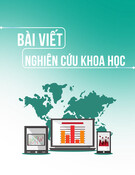








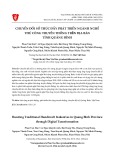
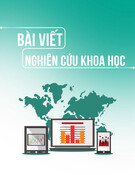
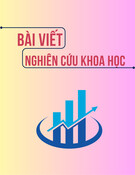
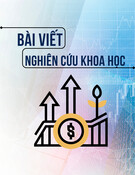

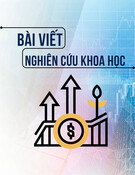
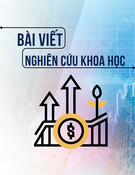
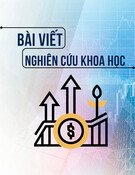





![Bộ câu hỏi trắc nghiệm Đổi mới và sáng tạo [mới nhất]](https://cdn.tailieu.vn/images/document/thumbnail/2025/20251007/kimphuong1001/135x160/56111759828894.jpg)


